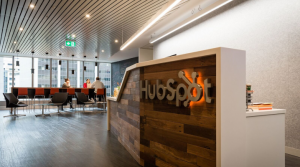Microsoft’s Biggest Mistake of 2010
While I am sure that there are many things that Microsoft has done in the past that tech pundits out there would point to as being massive failures, there is one thing, and one thing alone, that I really believe was their biggest mistake:![]()
Killing the Courier
For those of you not familiar with the Courier Project, you can get caught up with a couple of our past posts on the story but the short story was that the courier was Microsoft’s attempt to re-imagine the tablet. It is also important to remember that this was all happening during the same time that Apple was bringing the iPad to market.
I remember as the images of the Courier started showing up on Engadget. The buzz around the project was increasing and it was all positive. Many in the tech world at first couldn’t believe that this could be a Microsoft project, but as word and images spread, you could feel a sense of excitement building around the Courier.
This was something totally new, from a company that couldn’t get good press if it tried.
Then came word that the project had been killed and instead of a transformative device, we got the failure of the Kin. Instead of transforming and disrupting, Microsoft killed the one product that could have fit across so many areas of our daily lives.
To give you an idea here are just a couple of the different demographics that I believe the courier could have set the tone of the future.
The Day-Timer Generation
For anyone that can remember working and living in the 80′s there was one item that was so ingrained in our daily lives. That item was generically known as a day planner or by its more commercial names of: Day-timer, Filofax, or Franklin Planner to name just a few.
It didn’t matter where you went either business wise, or our personal day to day activities – if you didn’t have a day planner within a hands breadth away you just weren’t with it. Our lives revolved around the scratches in those day planners, but they were just paper, and this is where the Courier could have totally re-visioned not just the day planner but the PDA in general.
The whole design of the Courier with it’s fold-able two panel design made it the perfect book slash journal design needed for something like a day planner. With the right software, I think you could have had a whole generation that was already accustomed to that concept of “day planning” picking up a courier for just that alone.
The Student
The fact is that as much as the iPad, Kindle, or any of the other e-book offerings might want to become the go-to device for students, they all have their failings. This is a market that is starting to see some other companies looking to enter in a big way, and some with the dual pane form factor, because it is a market that is prime for disruption.
Professors and teachers to varying degree, and varying reasons, hate the invasion of laptops. Something like the Courier on the other hand would be a perfect replacement for laptops, or even the current offering of slates, and as with day planners provide a recognizable, and comfortable, form factor that both students and teachers could appreciate.
Text books would feel familiar, but incredibly enhanced. Course timetables with notification would be an integral part of that, and when connected to a school wi-fi, could provide real-time update information for both students and teachers. It would also provide a perfect gateway to other Microsoft products; both software and hardware.![]()
The Rest of Us
Even though I just pointed out two different areas where the Courier is a natural fit, that doesn’t mean that the rest of us couldn’t have fallen in love with a Courier.
From a doctor on his rounds to an art student sketching out ideas or taking photographs of something that inspires them the Courier with its subliminally comfortable form factor had a chance to be a new day planner on steroids.
Some might question whether or not Microsoft could have brought a successful version of the Courier to market, but one just has to look at the growing success of Windows Phone 7 or even the Kinect to see that this could have indeed been possible.
More importantly is what it would have done for the company. In one fell swoop Microsoft could have been the one to disrupt a market, as no one had an idea like this on the drawing board
For me, amongst everything else the company has done in 2010, this is the single biggest mistake the company has made.
[Cross-posted at Winextra]
A message from John Furrier, co-founder of SiliconANGLE:
Your vote of support is important to us and it helps us keep the content FREE.
One click below supports our mission to provide free, deep, and relevant content.
Join our community on YouTube
Join the community that includes more than 15,000 #CubeAlumni experts, including Amazon.com CEO Andy Jassy, Dell Technologies founder and CEO Michael Dell, Intel CEO Pat Gelsinger, and many more luminaries and experts.
THANK YOU













